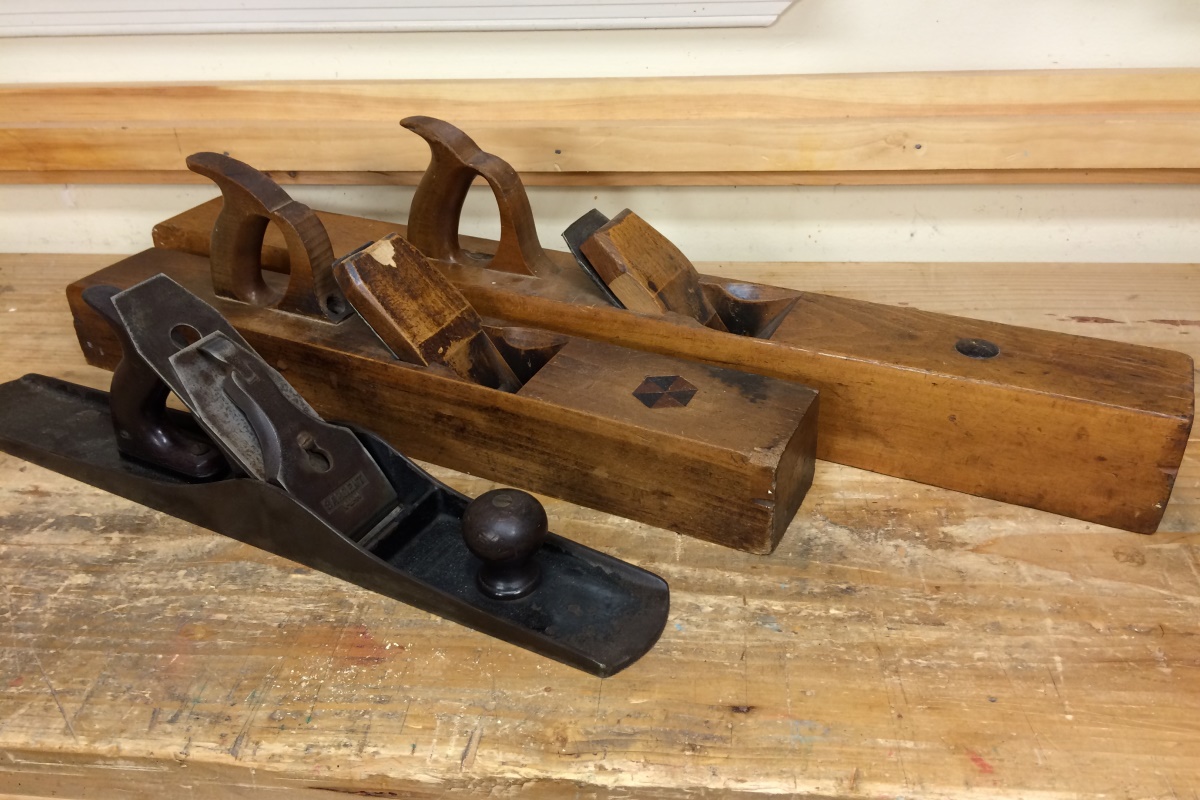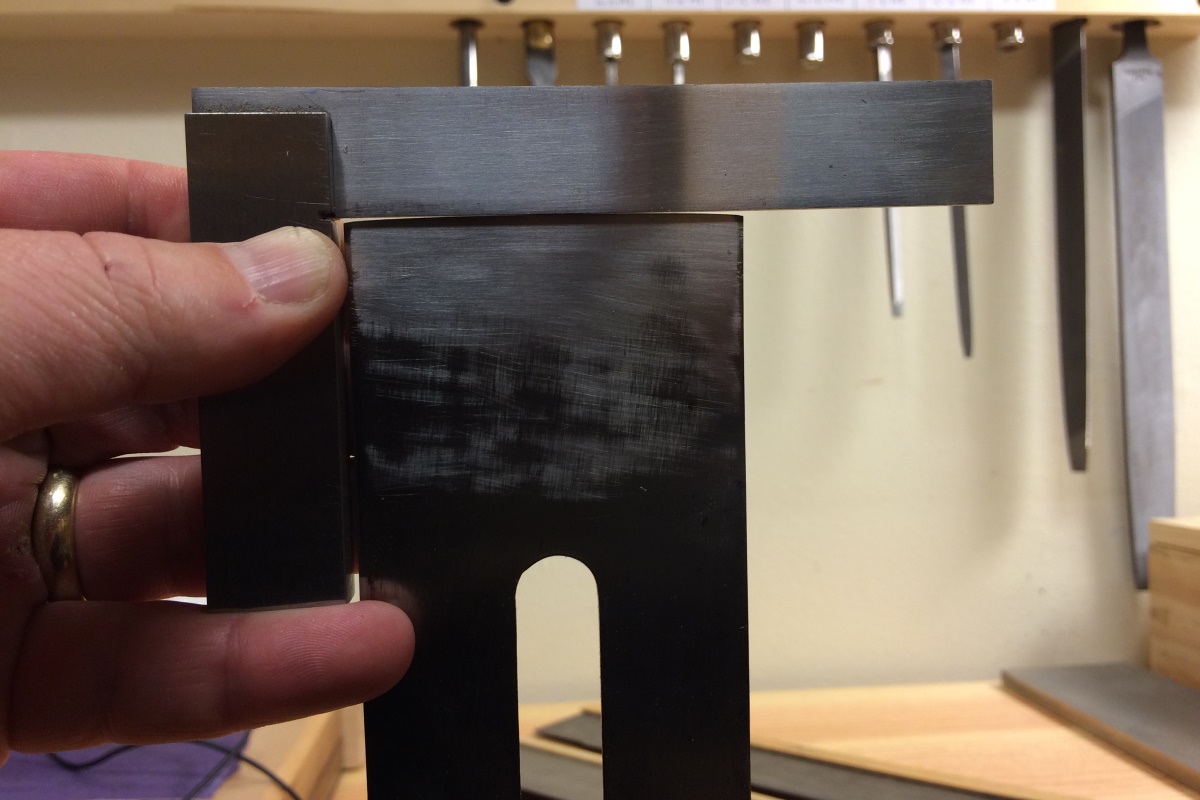How To Use A Jointer Plane
Hand airplane names can be disruptive for those new to their use. Just Google the term smooth plane and look at how many images of dissimilar kinds of planes carry that item moniker. However, the try plane is probably the bench plane that causes more confusion and disagreement than whatever other in the group. Depending upon who you talk to, what part of the globe they are from, or what text you are reading, this plane may be called the try plane, truing airplane, long airplane or jointer plane (just to name a few). So why all the confusion? In a discussion, marketing.
I'yard going to pick on Stanley for a minute, only because they are the most common of the modern manus planes. Stanley identified their line of bench planes by number, #1 through #8. They also named these planes so that users at the time would be familiar with their intended utilise. The problem is, that Stanley based their naming of the planes only on a particular plane's length. Over time, the true meaning of the traditional names of those planes got lost in the marketing hype.
Stanley called their #7 (22″) bench plane a try airplane, and they called their #viii (24″) bench plane a jointer plane. They based these names on the relative length of the plane. In all fairness, the #7 does make a very skilful try plane and the #8 does make a adept jointer aeroplane. However, the #7 tin can also make a good jointer airplane and the #8 tin can likewise be a fine endeavor plane. So you lot can come across how confusion abounds. In social club to shed some light on the subject and get to the true significant of these terms, it helps to expect a bit further back into the tool'southward history.

Peter Nicholson, in his 1845 text The Mechanic'southward Companion, provides us with a definition of both of these planes. In the book, Nicholson states that the purpose of the endeavour plane is to
"…reduce the ridges made by the jack aeroplane, and to straighten the stuff: for this purpose it is both longer and broader, the edge of the iron is less convex, and set with less project…"
When describing the iron of the effort plane he says
"The sharpening of the iron, and the performance of planing is much the aforementioned as that of the jack plane…"
He describes the iron of the jack plane earlier in the book, proverb
"The cutting border of the iron must exist formed with a convexity, and regulated by the stuff to exist wrought, whether it is hard or soft…"
So nosotros tin can discern from Nicholson that the effort plane has an fe ground with a convex or cambered edge to forbid the corners of the iron from inbound the forest. Too, nosotros know that the slant of the try plane's iron is slightly less than that of the jack plane. We can likewise tell that it is set for a finer cut than the jack plane, and that it is used after the jack plane for flattening and straightening the stuff. From this clarification, it sounds similar the plane is primarily intended for employ on surfaces that are wider than the fe of the plane, i.eastward. the faces of boards.
On the other paw, when he writes nigh the jointer plane, he says that the jointer
"…is principally for planing straight edges, and the edges of boards, so as to make them join together; this operation is called shooting, and the edge itself is said to exist shot…The shaving is taken the whole length in finishing the articulation, or narrow surface."
So here, Nicholson is specifically calling out working on the narrow edges of the lath, specially when the intent is to make an edge to edge glue articulation between two boards. This makes things a little more than clear in the stardom betwixt the try plane and jointer. Nicholson does give lengths for both of these planes equally well, but equally with most measurements of the period, these are generalizations and not rule. A attempt plane and jointer airplane could potentially be the same length. The true difference in these planes is in their intended use, and therefore in their sharpening and setup.

Every bit the try airplane is for trying (or truing) surfaces afterward the jack plane, it's iron is cambered, though less so than that of the jack plane, so that it does not leave plane tracks on the surface of the work, which is wider than the plane. The jointer aeroplane, on the other hand, while resembling the attempt plane in appearance and length, is really a joinery plane, not a surfacing aeroplane similar the effort plane. It's purpose is to straighten boards' edges and especially to "make them bring together together" in an edge joint, hence the phrase jointing the border. With this in mind, it makes more than sense for a jointer plane to accept a directly iron like other joinery planes (e.k. rabbet planes), because the atomic number 26 of the jointer aeroplane is wider than the edge being planed, and a straight iron will effect in a flat edge, which is preferred for edge gluing.
Do non, all the same, confuse jointing the edge with truing the edge. If an border needs to be squared to a truthful 90 degrees (for example, the front end of a case which will have a face frame applied), a try plane with a cambered blade will really make the procedure easier. That'southward considering the plane tin be shifted side to side to accept a tapered shaving, with the thicker role of the shaving existence taken from the college corner. This process continues until the higher corner has been lowered sufficiently to make the edge square.
On the other hand, when making a articulation betwixt two boards, one wants a flat edge for gluing. This is the purpose of the jointer airplane. Jointed edges need non be a perfect 90 degrees if the two boards are match planed. When match planing, the show faces of the two boards to be joined are placed together and the mating edges are planed at the aforementioned time. When planed together, the boards can exist opened similar a book and the angles of the edges will be complimentary to each other, resulting in a flat console. Perfect xc degree edges are non necessary. If yous don't believe me, depict information technology out for yourself and see how it works. A cambered iron cannot brand this articulation equally well as a straight fe.
Hopefully, this clears upwardly some of the confusion surrounding the endeavour plane. You tin run into now that a #7 and #viii can both actually make very nice try planes or jointer planes. Information technology all comes downward to how you ready the iron.
How To Use A Jointer Plane,
Source: https://brfinewoodworking.com/you-say-jointer-plane-i-say-try-plane/
Posted by: shellenbargerjuplage.blogspot.com


0 Response to "How To Use A Jointer Plane"
Post a Comment